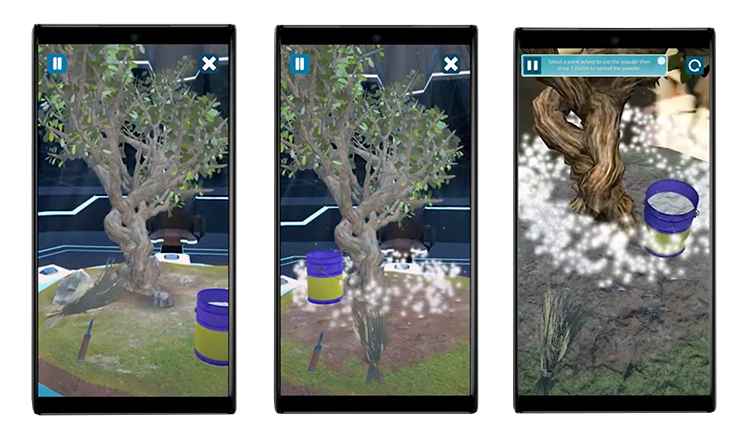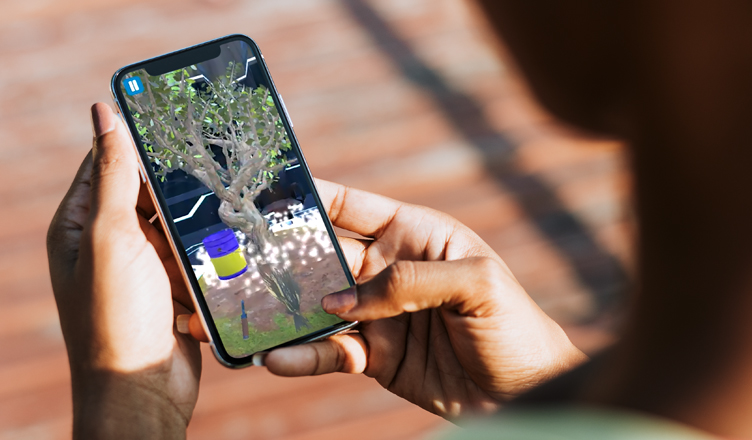A good game is a bit like a fairy tale: it has the capacity to bring us into the “flow”, forgetting all that is around us and touching our emotional strings. That is exactly what Imaginary wants us to experience when we visit a museum or heritage site. They are researching and prototyping games to enrich the visit to one of Mingei’s pilots on glass, weaving and mastic. How can we use game technology to uplift the visitors’ experience?
The state of flow
What is a state of “flow” exactly? Csikszentmihalyi (2016) studied the concept of flow to understand how artists feel during the creation of art. According to Csikszentmihalyi, flow is the mental state in which a person is fully immersed and involved in an activity, a feeling of “energized focus” and is enjoying this activity to the point of feeling absorbed and of forgetting everything else, even losing one’s sense of time. This state is very well known in positive psychology. The same feeling can be caused by being in nature. Don’t you feel ecstatic sometimes in front of nature and its manifestations? A similar feeling is often experienced when playing games. Flow is what is at the base of a good game design.
Within the Mingei project, all of these elements are apparent. We have both pieces of arts and crafts, like silk or glass production, and manifestations of nature, like the mastiha trees and their cultivation and transformation into different products, which can be considered in essence a form of art again. One of the aims of the project is the preparation of game-based experiences to capture and collect these examples of craftwork and be able to experience them again and again. Instigating a state of flow among the visitors, helps them to immerse in the environment, while learning about crafts and enjoying the process. Also, we wish to be able to stimulate people’s enthusiasm to the point that they want to share these findings with peers, transmitting information and sharing their experience to a larger public.

Participatory design
To reach these aims, Imaginary uses the method of participatory design. This means that stakeholders and particularly end users are directly and actively involved in the design phase of a digital solution. Researchers at Imaginary are always adopting this approach and every game or digital interactive solution that is being developed, following an internal methodology which contains user studies.
In former projects, Imaginary already worked on tourism scenarios in general, and visiting heritage sites is clearly an example of a very precise and focussed activity within a tourism setting. As such, former results now represent preliminary investigations that can be used as the base of the Mingei game design.
Specifically, as part of the SmartSociety project, a survey was carried out in order to gain insights and opinions about already available solutions and needs of future potential users. Around 100 people answered questions related to their present use of tools and their personal opinion on a potential future smart tourism system. The survey sample was composed of 69% aged between 18 and 34, 28% between 35 and 54 and only 3% aged over 55. The people comprising the sample population are from multidisciplinary backgrounds and 91% of them travel.
In this survey two main concerns were raised by users, which are still very actual and of high interest. Given the majority of young participants to the survey, they may come as somehow unexpected. “The biggest problems they face when travelling are Internet accessibility and transportation. To solve them, they mostly need to use the Internet. This is however not always at their disposal, creating difficulties”. Also, when asked about digital solutions in a tourism/visit setting, “the negative aspects most cited were its privacy violation”. As such, we can conclude that internet accessibility and privacy are two concerns that need to be taken into consideration.
Ignoring these concerns would probably immediately mean that even the most beautiful, innovative and interesting game app could fail its target. These two shortcomings actually point us in the same direction as a very practical and concrete organisational need, coming from museums and touristic attractions. They experienced that allowing users to use their own mobile technology, such as their own smartphone or tablet, means a huge investment in maintenance and sustainability of the digital solution offered by the museum. It causes the continuous need to update apps and similar software solutions, to be able to offer access to the newest mobile devices.
Both the experiences of visitors and the museums suggest that using the mobile technology of visitors is not the best solution. If a museum is looking for a cost-effective solution which is at the same time sustainable in the medium and also from a financial point of view, the only viable and sustainable way is to offer museum-owned technology to their visitors.
Prototypes
In the next period, researchers from Imaginary will study and prototype the ways games can be enriching a visit to one of the Mingei pilot sites using technology they find there. They will include 3D simulations of crafts and possibly augmented reality. Below, you can already see two prototypes created by Imaginary.
In this game, localised on Chios island, the user is being introduced to mastic cultivation and can experience several practices, like e.g. completing the collection of mastic.
In the game about silk production, once Krefeld is reached, users can encounter past culture interacting with some old protagonists and also try to reconstruct some traditional patterns of clothing from the collections. Based on the concept of flow, these games will support the Mingei visitors to actively immerse into the creative process of crafting.
Written by Lucia Pannese (Imaginary)
References
Csikszentmihalyi, Mihaly. 2016. Flow: The Psychology of Optimal Experience. HarperCollins Publishers Inc.
SmartSociety project. Hybrid and Diversity-Aware Collective Adaptive Systems when People meet Machines to Build a Smarter Society. 2013-2016.

